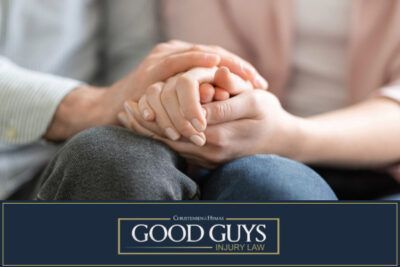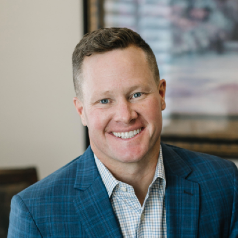
Experiencing a bike accident can be a traumatic event, both physically and mentally. After a major crash, the journey to get back on the bike can be challenging.
At Good Guys Injury Law, we understand the importance of cycling in your life, and we want to help you regain your confidence and enjoy the sport you love once again.
Next, we will discuss some tips for returning to cycling after an accident, focusing on the physical and mental aspects of recovery. Additionally, it is important to assess and potentially adapt your bike to ensure comfort and safety when resuming cycling.
Table of Contents
The Healing Process
Before jumping back into cycling, it is important to allow your body the time it needs to heal. The healing process varies depending on the severity of the injuries sustained in the accident, whether on a bike or electric bike. Whether you experienced road rash, a serious injury to your knee joint, or other injuries, patience is key.
Your body will often tell you when to start cycling again. If you experience sharp pain at the injured site or feel discomfort during light exercise, it’s important to stop and give yourself more time to heal. Research shows that rushing the recovery process can lead to further injuries and setbacks.
Creating a Recovery Plan
A well-structured recovery plan is important for getting back on the bike safely. A recovery plan should include:
- Rest: The first thing to focus on is rest. Give your body time to recover from the trauma of the accident.
- Light Exercise: Start with light exercise that doesn’t strain the injury site. Activities like walking or using an indoor bike with low resistance can help maintain your fitness without overloading your body.
- Gradual Progression: As you heal, gradually increase the intensity and duration of your workouts. Begin with short rides and slowly build up to longer ones.
- Professional Help: If you need help structuring your recovery, seek professional help from a physical therapist or a sports medicine doctor. They can provide tailored advice to ensure you recover fully and safely.
- Assess and Adapt Your Own Bike: Evaluate and potentially modify your own bike to accommodate any physical limitations and ensure a comfortable and safe return to cycling. Even small adjustments can significantly improve your cycling experience.
Regaining Confidence After a Crash

One of the biggest challenges after a cycling crash is overcoming the fear and anxiety that often follow. It’s normal to feel anxious about returning to the road, especially if the accident is severe. Here are some tips to help you regain confidence:
Start Slowly
Don’t rush back into intense cycling. Start with short rides on familiar routes where you feel safe. An indoor trainer or indoor bike can also be a great way to ease back into riding without the risks associated with road cycling.
Focus on Mental Strength
The mental aspect of recovery is just as important as the physical. It’s normal to experience anxious thoughts or a low mood after an accident, but it’s crucial to address these feelings head-on. Consider talking to a therapist or counselor who can help you resolve any lingering fears.
Ride with Friends
Joining a group ride with friends can be a great way to rebuild your confidence. Being surrounded by supportive riders can make you feel safer and more comfortable on the bike. Plus, it’s a great way to enjoy the social aspects of cycling while focusing on your recovery.
Visualize Success
Visualization is a powerful tool for overcoming anxiety. Spend time visualizing yourself completing a ride successfully, feeling strong and confident. This mental preparation can help you build the strength to return to the bike.
Avoid High-Risk Situations
In the first few weeks back, it’s wise to avoid high-traffic areas or routes where your bike accident occurred. Instead, stick to quieter roads or bike paths where you can ride without the added stress of handling motor vehicles and car traffic.
Tips for Your First Ride Back
When you’re ready to take your first ride after the accident, it is crucial to assess and potentially adapt your own bike to ensure it is suitable for your current physical condition. Keep these tips in mind to ensure a safe and positive experience:
Check Your Bike
Before your first ride, assess and potentially adapt your own bike to ensure it suits your current physical condition. Take it to a local bike shop for a thorough inspection. Even if the bike looks fine, there could be hidden damage from the crash, such as issues with the front wheel or frame. Ensuring your bike is in top condition will give you peace of mind as you return to cycling.
Warm Up Properly
A proper warm-up is essential to prepare your body for cycling. Start with some gentle stretching and a few minutes of walking or light pedaling on an indoor bike. This will help loosen up your muscles and reduce the risk of re-injury.
Take It Slow
On your first few rides back, keep the pace slow and steady. Don’t push yourself too hard. The goal is to get comfortable on the bike again. Remember, recovery doesn’t happen overnight, and it’s okay to take your time.
Be Mindful of the Injury Site
Pay close attention to how your body feels during the ride, especially at the injury site. If you notice any discomfort or sharp pain, it’s important to stop and reassess. Continuing to ride through pain can worsen the injury and delay your recovery.
Ride with a Friend
Consider bringing a friend along on your first ride. Not only can they provide moral support, but they can also help keep an eye on you and ensure you’re riding safely. A group ride can also add a level of safety and security as you navigate your return to cycling.
Plan a Short Route
Choose a short, familiar route for your first ride. Avoid challenging terrain or routes with heavy traffic. The focus should be on getting back into the rhythm of cycling, not on pushing your limits.
Preparing for Longer Rides
As you start to regain your confidence and fitness, it is crucial to ensure your own bike is properly adapted and comfortable for longer rides. You may feel ready to tackle longer rides. Here are some tips for transitioning from short rides to more extended cycling sessions:
Increase Distance Gradually
As you start with short rides, you should gradually increase your ride distance. Add a few miles each week to your route, but listen to your body and do what is necessary.
Focus on Technique
After a cycling crash, it’s important to focus on your technique to avoid future accidents. Pay attention to your lane position and ensure you follow all traffic laws. If you need more clarification about your technique, consider taking a cycling safety course to refresh your skills.
Keep Up with Strength Training
In addition to cycling, continue doing strength training exercises to rebuild the muscles around the injury site. This can help improve your overall stability and reduce the risk of re-injury.
Listen to Your Body
Your body’s feedback is essential in determining when to push forward and when to rest. If you experience fatigue or pain during a longer ride, don’t hesitate to stop and take a break. Crashes happen, but re-injuring yourself during recovery is something you want to avoid at all costs.
Stay Mentally Strong
As you transition to longer rides, maintain your mental focus. Don’t let anxious thoughts take over. Remember, you’ve already taken the important steps to return to cycling safely, and each ride is an opportunity to rebuild your confidence.
When to Seek Professional Help

Sometimes, despite your best efforts, recovery from a bike accident can be more challenging than expected. If you’re struggling with persistent pain, anxiety, or difficulty returning to your previous level of cycling, it may be time to seek professional help.
Our team of lawyers can provide any cyclist with resources needed for healing or
Physical Therapy
If you’re dealing with ongoing pain or stiffness, a physical therapist can help. They can provide targeted exercises to strengthen the injured site and improve flexibility and endurance.
Counseling or Therapy
It’s normal to experience low mood or anxious thoughts after a serious accident, but if these feelings persist, consider talking to a mental health professional. They can help you work through your fears and build the mental strength needed to return to cycling fully.
Medical Evaluation
If you experience sharp pain or discomfort that doesn’t improve, it’s important to seek a medical evaluation. There could be underlying issues that need to be addressed before you can safely continue cycling.
Contact Good Guys Injury Law After A Bike Accident

Returning to cycling after an accident is a significant achievement. It requires patience, dedication, and a willingness to listen to your body. At Good Guys Injury Law, we’re here to support you every step of the way. Whether you need advice on the healing process, help with a bike accident claim, or someone to talk to about your own experience, we’re here for you.
Contact us to assess your case after a bike accident. Remember, recovery takes time, and it’s okay if it doesn’t happen overnight. Focus on your progress, celebrate each milestone, and know that with the right approach, you can return to the bike and enjoy the freedom of cycling again.
